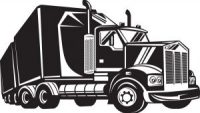Trucks
March 10, 2018
There have been a lot of regulatory changes in trucking in recent years that farmers need to comply with. As of October 1st, 2018, for most states in Australia, the Chain of Responsibility will be further enforced into a model that follows Work, Health & Safety Law (WHS), not just the Heavy Vehicle National Law
- Published in Plant & equipment, Regulations & codes of practice, Regulations & on-road codes, Trucks
No Comments
Shearing Shed
March 10, 2018
My favourite resources: Shearing Safety – Worksafe VIC Woolshed Safety – Farmsafe Australian Wool Innovation have some great resources for safety when working with sheep: https://www.wool.com/on-farm-research-and-development/wool-harvesting-and-quality-preparation/ awi_4_pillars_of_wool_handling awi_5_pillars_of_shearing awi_sharpening1 code-of-conduct-woolshed-poster-march16 five_pillars_of_shearing four_pillars_of_wool_handling Hazard Assesment – Shearing Sheds
- Published in Livestock & infectious diseases, Shearing shed
Remote & Isolated Work
March 10, 2018
Many farmers and their families in Australia live and work in remote, isolated locations, that’s just how it is! What rural/pastoral people consider remote or isolated is quite different to what those in cities and large rural centres think. But ultimately, a farm is a workplace so you need to prepare for emergencies in relation
- Published in General farm safety, Remote or isolated work
Records Management
March 10, 2018
Record keeping is a good habit to foster, but in my experience, has never been the priority item to be addressed on a farm. There are some records that you are legally required to keep ……but not a lot! Then there are other records that might help you with your decision making and management of
- Published in Records management
Manual Handling
March 10, 2018
Farmers have a lot of lifting and shifting and rearranging we do in our sheds and workyards. We get into awkward postures when performing machinery maintenance and other tasks. Get organised Don’t be a hero! Use the machinery & tools you have available to lift heavy objects or position yourself appropriately to the work at hand
- Published in General farm safety, Manual handling
Industrial Relations
March 10, 2018
If you employ workers on farm, you have more than just work, health and safety to manage. There are employment requirements for pay slips, superannuation, work hours, award rates, leave entitlements and more to keep on top of. It’s a matter of getting organised and there are a great deal of resources on the internet
- Published in General farm safety, Industrial relations resources
Induction Resources
March 10, 2018
Induction of new workers is one of the most important things you can do to improve safety on farm. There is a term that I think was coined in the UK called ‘situational awareness‘. This is what workers need on a farm as the situation changes regularly and they need to be aware and adapt
- Published in Induction, Worker Induction
First Aid
March 10, 2018
There are specific requirements for a workplace first aid kit so you need to think about how many people you have working within the business and have enough kits to also cover your remote & isolated work. Have a well stocked kit at your main workplace/workshop Provide smaller portable kits that can be taken in
- Published in Emergency procedures, First aid
Farmer Health & Safety
March 10, 2018
Resources: Farmer Health Better Hearing for Farming Families – Ag Health Heat Stress – Ag Health House Guide Laundering Clothing – Farmsafe WA Organic Farm Dusts – Ag Health Suicide Prevention – SA Health Guides Available Farmers Guidebook – Safework SA – Great Resource WHS Planning – Easier than you think – RIRDC WHS –
- Published in Farmer health, Farmer health & safety, Farmers & safety research, Guides available
Electrical Safety
March 10, 2018
Electrical Safety on Farm Get an electrician or qualified test & tagger to test and tag all of your electrical equipment and power cords. This should be done at varying times depending on the device and its location, but at least get it done every 12 months In some states, you can do an Electrical
- Published in Electrical safety, Powerlines









